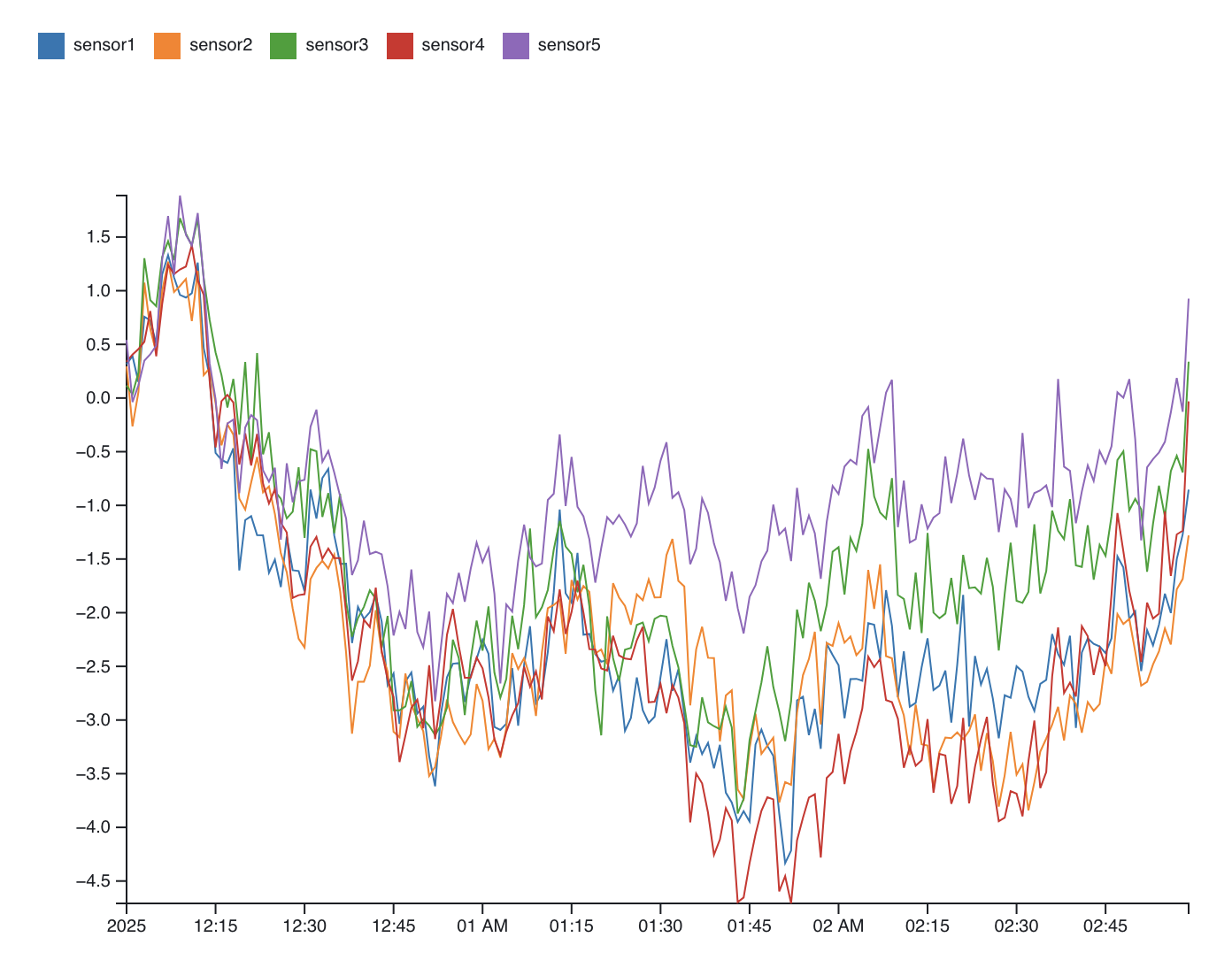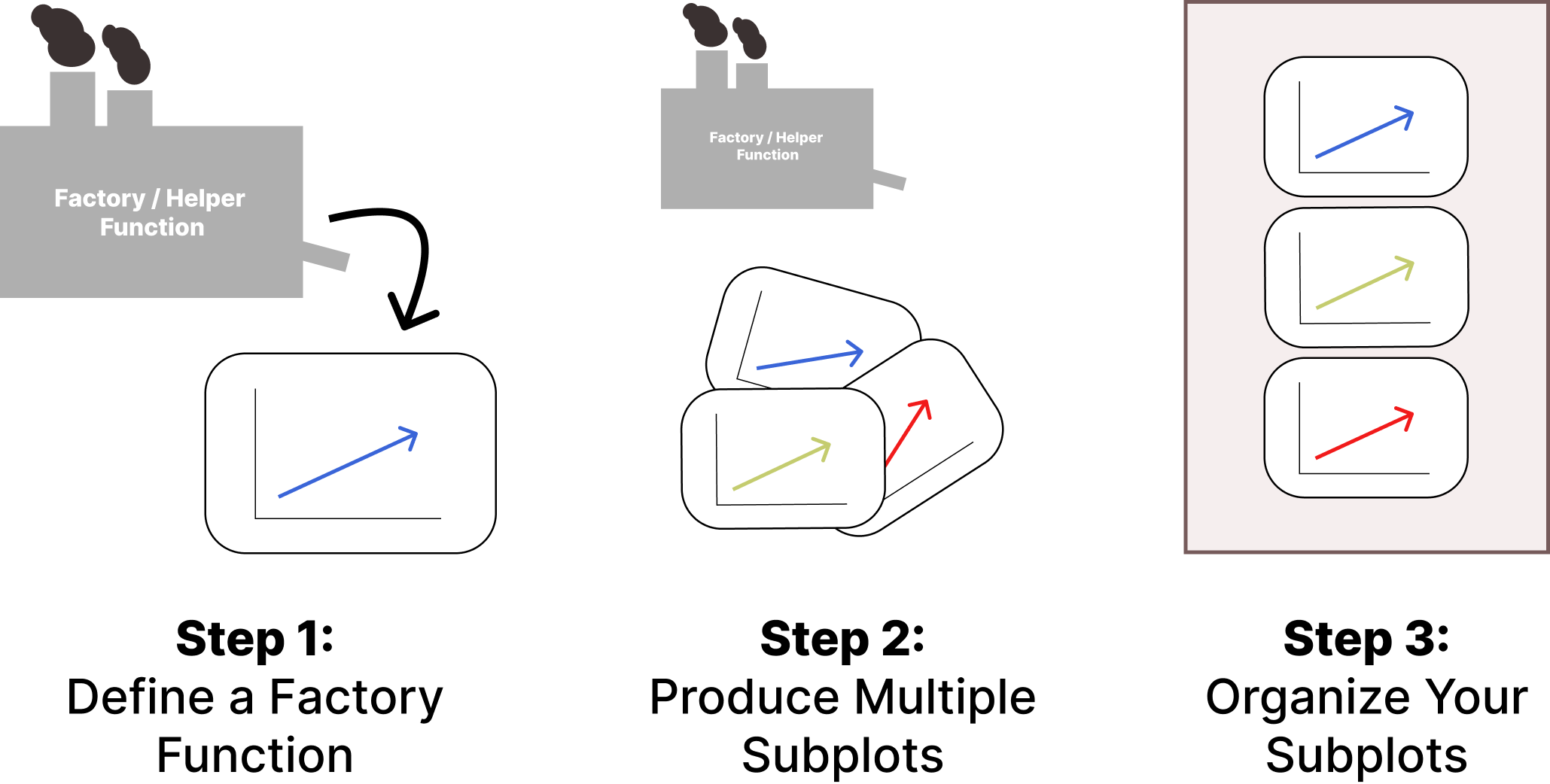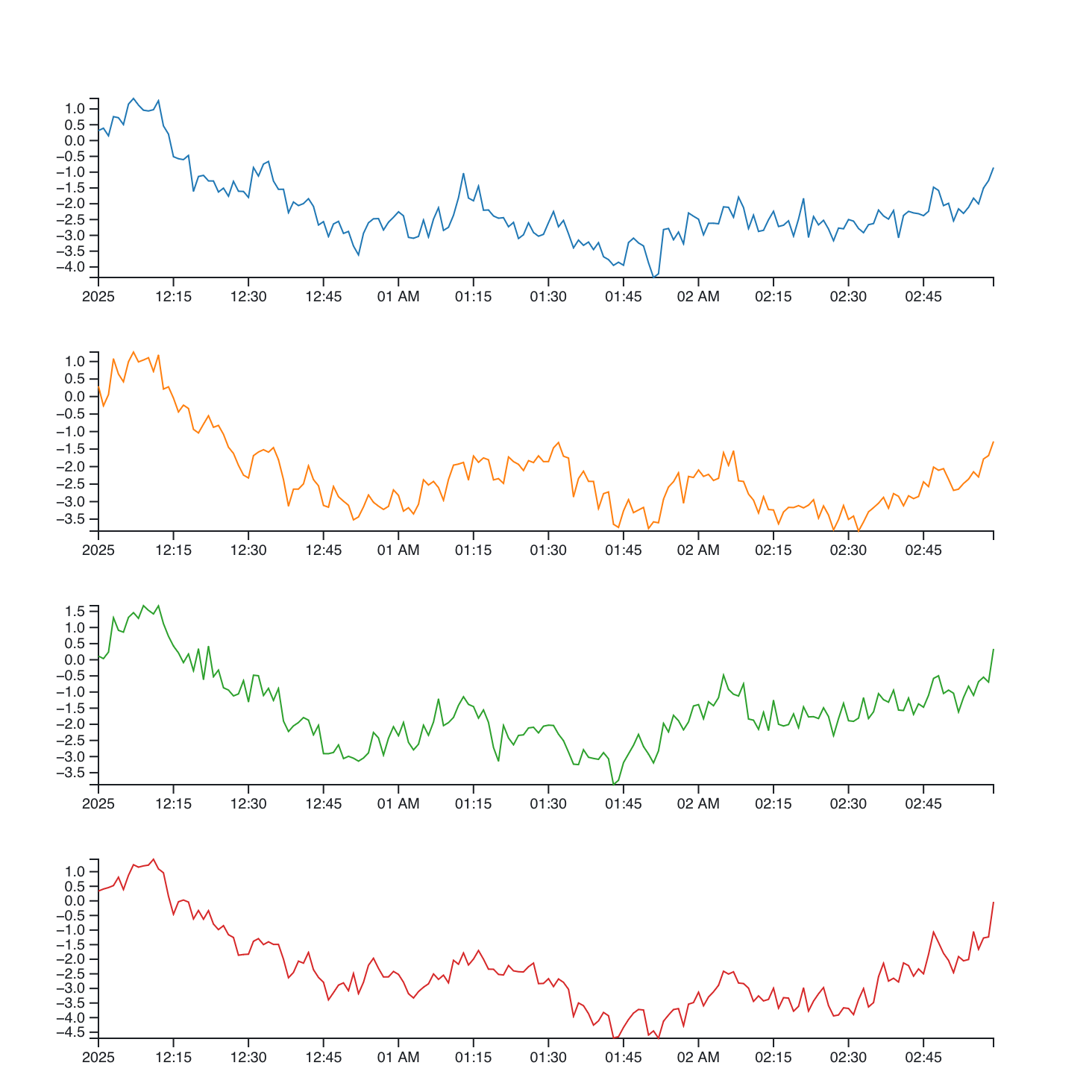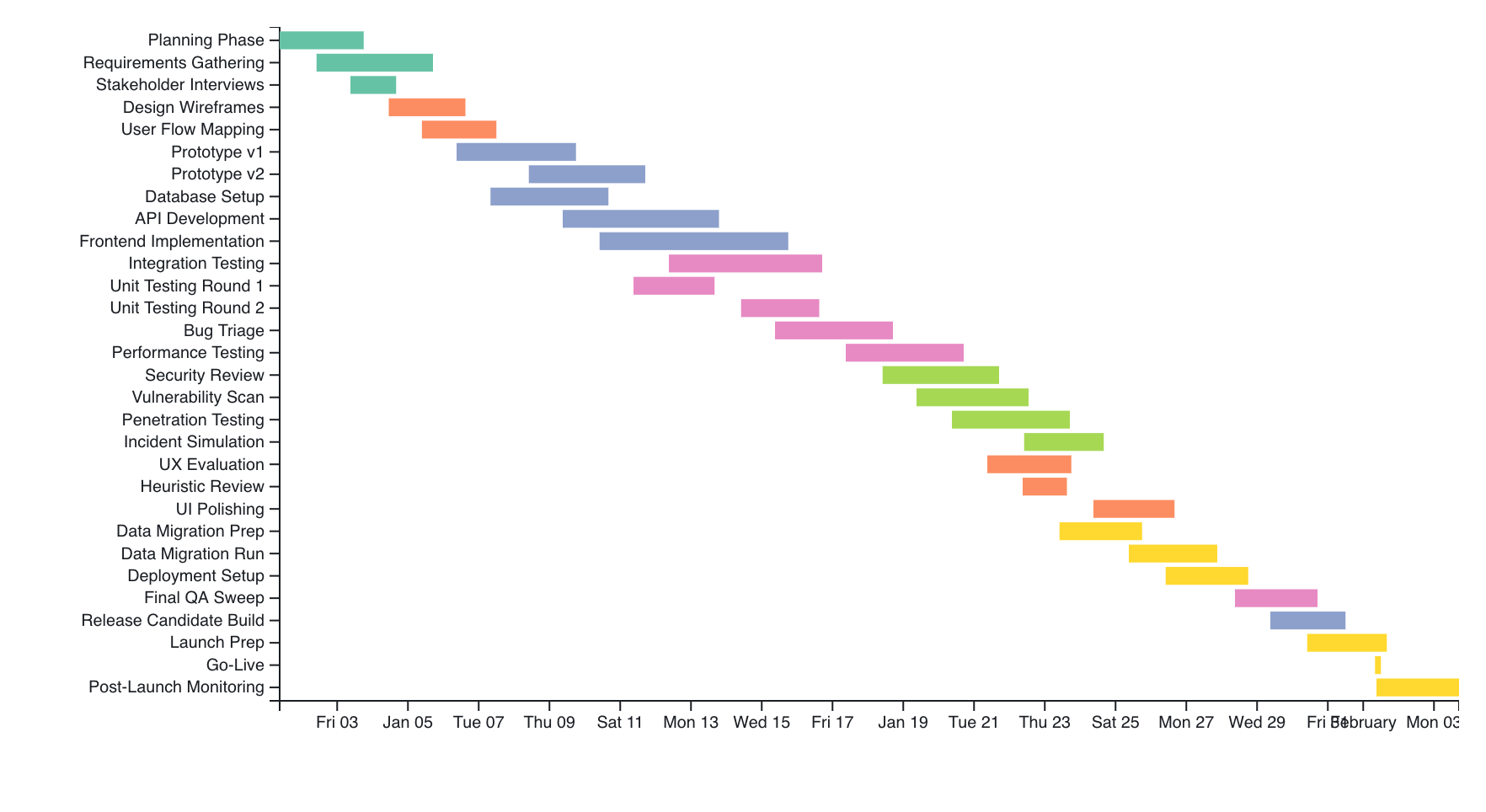Week 11 Lab: Building temporal visualizations, Time series analysis with D3
CS-GY 6313 - Information Visualization
New York University
2025-11-14
Week 9 Lab Overview
| User Interface | Graphics Library | Notebook(s) |
|---|---|---|
| observablehq.com | D3 | Week 11 Lab Notebook |
Today’s Lab Activities
Today we will be a exploring the following topics:
- Group and Mini Projects: Reminders
- Main Lab Activities:
- Further Practice with
Date()parsing - Aspect Ratios
- Small Multiples:
- Creating Subplots
- Combining Plots
- Example: Gantt Charts
- Further Practice with
Group and Mini Projects: Reminders
| Assignment | Due Date | Details |
|---|---|---|
| Milestone #3: First Draft | Nov. 17 | Initial D3 implementations |
| Mini-Project #2 | Nov. 20 | Temporal Data Visualizations |
Group Project Milestone #3: Deliverables
Submit an Observable notebook or a Framework project with:
- Brief introduction to your project
- For each question:
- State the question
- Show the D3 visualization
- Describe what the visualization shows
- Answer the question based on the visualization
At this stage:
- All visualizations should be implemented in D3
- Focus on getting the basics working
- Styling/polish can come later
- Interactivity should be functional (if included)
- It’s still okay to refine questions if needed
Group Project Milestone #3: Reminders
This is your first implementation milestone.
- We expect working D3 code for all your visualizations.
- Your visualizations don’t need to be perfect, but they should work and show your data correctly.
- labels might be messy
- colors might be defaults
- interactions might be basic
- This is when you discover implementation challenges:
- “This chart type is harder than I thought…”
- “The data is more complex than I realized…”
- We’ll give you feedback on what to improve for the next draft.
Review: Line Charts: Time + Quantity
The fundamental temporal visualization: position encodes both time (x) and values (y)

Basic Line Chart
Aspect Ratio
How chart dimensions affect perception
Definition: Aspect Ratio = Width / Height
Impact on Trend Visibility
Different ratios make trends more or less visible

Rule of thumb: Always test different aspect ratios to see which one best conveys your message
Review: Parsing Time Data in JavaScript
JavaScript: Date() object class
- This object class expects your timestamp to already be in the ISO-8601 format.
- this class gives you some nifty functions, such as using
.getYear()or.getMonth()to extract the year and month of a timestamp. - You can look up the properties and functions of the
Date()class here.
D3: d3.timeParse()
- Unlike JavaScript’s
Date()object class, D3 lets you define the expected format of your input string. - The output is generally the same: it’ll return a
Date()object class in the ISO-8601 format.
Let’s Try: Basic Time Series Line Chart
Practice: Typecasting Date Types [5 mins]
We already imported the raw data from
ex_data_1@4.csvintoraw_data, without type-casting the data.Goal: Use native JavaScript
Array.map()to typecast the features in our raw data into the following:date: JavaScriptDate()typetemperature: Float typehumidity: Integer typeco2: Integer type
Let’s Try: Basic Time Series Line Chart
Practice: Plotting Line Data [15min]
- You’ve been given a set of interactable elements. They output to a
dimsobject. You must use thisdimsobject to help you plot a dynamic line chart. - Once you plot the chart, play around with the chart’s aspect ratio. Which aspect ratio seems to be the best for each y-axis feature?
Solving Spaghetti Plots

One solution: Small Multiples
Small Multiples - Implementation
- Core Idea: Split the data into series or groups of data. Then visualize that data in separaet plots.
- Many ways to achieve this in programming.
- Individually plotting each chart by hand.
- Using fancy libraries to auto-separate the plots.
- Automating the process of generating charts.
How Do Small Multiples? Let’s Think

A Possible Solution:

Let’s Try: Solving Spaghetti Plots
Practice: Creating our Factory Function [10min]
Let’s create a factory function to help us generate a single subplot. Your job is to create this create_subplot() factory function with the following parameters:
parent: The parent element - usuallysvg.sensor: An element fromsensors.x_scale: The scale used for our x-axis. Must be generated prior.c_scale: The color scale. Must be generated prior.width: The width of this subplot.height: The height of this subplot.x_pos: The x-position of this chart relative to the parent.y_pos: The y-position of this chart relative to the parent.
If succcessful, the function should append a new chart with all our data already plotted inside it and sized based on our parameters, alongside our axes and so on.
Let’s Try: Solving Spaghetti Plots
Practice: Organizing our Subplots [10min]
- Once we have
create_subplot()created, then we can see if it works. - Combine the scaffolded code we gave you with
create_subplot(). Keep in mind that you need to calculate the position of each chart manually, given the provided SVG parameters! - If successful, you should see our solution plot to the right.

A Personal Favorite: Gantt Charts

Group and Mini Projects: Reminders
| Assignment | Due Date | Details |
|---|---|---|
| Milestone #3: First Draft | Nov. 17 | Initial D3 implementations |
| Mini-Project #2 | Nov. 20 | Temporal Data Visualizations |
